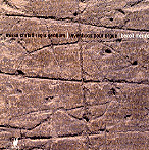As the liner notes for this recording state, the premiere of a new work is both “fascinating and risky”. Following this we’re given a rather labored account (by conductor Olivier Opdebeeck) of the process of learning and performing what amounts to a decidedly “fascinating” mass, remarkable for its adventurous manipulation of texture–ranging from single lines to tone clusters and other dense and dissonant configurations, the choir divided into as many as 12 parts–and for its often complex rhythmic schemes and purposeful, ingenious balancing of the varied weight and colors of the organ against those of the chorus. Composer Benoît Mernier (b. 1964) sets the Ordinary sections of the mass, minus the Credo, and as he is also an organist, obviously took enthusiastically to the task of making sure that this instrument’s role in the work was of major importance. Indeed, the organ part, written for “the new organ of the Cathedral of Saints Michael and Gudule” in Brussels, is of formidable proportion and difficulty, and any mention of the quality of the overall performance must give major tribute to organist Xavier Deprez. Of course, the choir–or choirs, in this case–also must be commended for tackling such a rigorous work that requires unfailing concentration along with exceptional intonation–and sheer bravery in facing the relentlessly complex rhythms and ever-shifting modalities.
There’s nothing really “pretty” or even very subtle (Arvo Pärt it’s not!), but the effects, mostly achieved by tempo, timbre, and rhythmic variations, are powerful and memorable. There’s no discernible tonality, however that doesn’t mean that harmony isn’t fundamental to the work’s structure–it’s just constantly interrupted by clusters and washes of sharp dissonance. Similarly, there are melodic sections–mostly chantlike–that disintegrate or explode into multiple fragments. The Agnus Dei gives the primary stage to the organ, with the eerily chanting choir used more as accompaniment. It’s safe to say that there’s no other work or composer with which to compare this piece, and verbal descriptions are inadequate. So if you’re curious–and anyone interested in new choral music should be–you’ll just have to hear it for yourself. The disc’s final 20-plus minutes, five “inventions” for organ solo, will appeal primarily to organists. Although there are underlying musical/structural devices at work throughout these pieces (you can tell Mernier is up to something, even if you don’t know exactly what), and they are laden with interesting registral and timbral effects, the busy complexity–linear and harmonic–ultimately is hard going for both ear and brain. Take this part of the disc in small doses and you’ll be fine. Again, organist Deprez is superb–and the sound throughout is near-ideal.
































